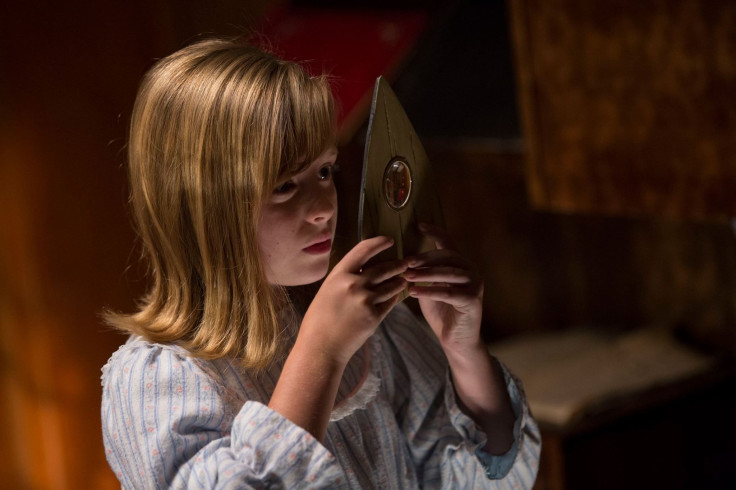Ouija Boards: Real Or Fake? A 2016 Explanation Before ‘Ouija 2’ Movie Release

Ouija boards are said to allow the living to contact those who have passed on. The board game has inspired countless scary stories, plot lines in horror movies and even has it’s own feature franchise, but just how real is it?
Following the sleeper success of 2014’s “Ouija,” Universal Pictures is releasing a prequel sequel to the horror tale on Oct. 21, “Ouija: Origin of Evil,” just in time for the Halloween season. Before you step into what is sure to be another thrill ride, take a look at what we know about Ouija boards and if they really work.
History
Kennard Novelty Company first introduced Ouija boards in 1891 in response to America’s obsession with spiritualism, according to Smithsonian magazine. Today, the board game, which offers a mix of simple phrases, numbers and letters, made to supposedly simplify communication with the dead, is sold in several styles and can be found at most toy stores. But for something long considered to be so devious, how could it be considered a toy?
The Mystery
While there’s no proving just how realistic Ouija boards are, Smithsonian magazine had some interesting findings about how they operate. Not only did they discover some psychologists believe it “may offer a link between the known and the unknown,” the process its creators went through trying to get a patent for the item has some haunted details...
The story goes that some of the board’s investors visited a patent office in Washington in 1891 where they were instructed by the chief patent attorney to have the board spell out his name, which is believed to have been unknown to the party at the time, in order to prove it worked. It is said that the board did just that, resulting in the “white-faced and visibly shaken” patent officer giving the item his seal of approval on their application for the new, other-worldly game.
Real Or Fake?
While Ouija boards may be popular among the curious, science says they’re not rooted in reality. The results generated from the boards are explained as being an example of ideomotor effect: unconscious movements performed by an individual because of expectation or mere suggestion.
First recognized in the 19th century, psychologist William B. Carpenter penned the term in 1852 following the fascination of séances and products such as Ouija boards. “It being a non-paranormal explanation for the results of these practices,” UK’s Critical Thinking reports.
In 2012, Psychology Today explained how the phenomenon directly relates to Ouija boards:
The planchette may seem to drag our hands along as it selects letters that spell out words, but it happens that muscular action does not always arise out of deliberate will or volition, or in fact, even upon our awareness. Our keen expectations for a certain outcome will sometimes direct the movements of our arms and hands as the planchette glides easily on felt-covered feet. This happens at a level that lies below our conscious attention… Yes, we select the letters ourselves in this game; it’s just that sometimes we don’t quite know that we do it or how we do it.
The Museum of Talking Boards site, however, has their own opinion on ideomotor effect. “Ideomotor response is the fancy-schmancy term scientists use to say that you moved the message indicator yourself without knowing that you did it. Well? Did You?”
“Ouija: Origin of Evil”
“Ouija: Origin of Evil” follows a young girl Lulu (Doris Zander) who uses the popular board to contact her dead father but instead opens up a portal to the other side. With her spirit “friends” guiding her, Lulu’s actions have ghastly affects on her family. Watch the trailer above and catch the horror film in theaters Friday.
© Copyright IBTimes 2024. All rights reserved.






















